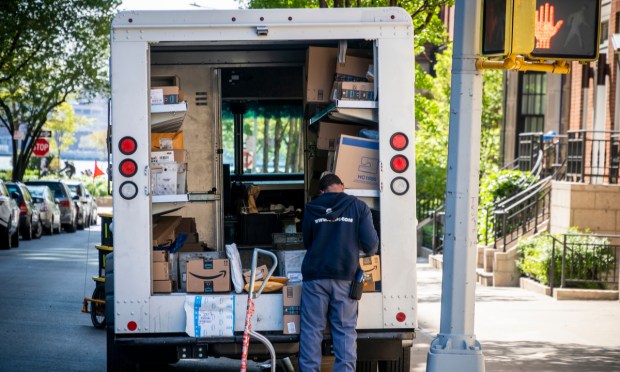
Cigo says it wants to help an increasingly cashless society tip delivery drivers.
To that end, the software company announced Monday (April 15) that it had added a digital tipping feature to Cigo Tracker, its logistic software application for last-mile delivery.
“Ridesharing and restaurant industries have facilitated in-app electronic gratuities,” the company said in a news release.
“Yet other sectors have lagged in offering infrastructure to help customers financially acknowledge drivers for often physically demanding work, such as with third-party logistics operators, furniture retailers, and appliance and construction material delivery drivers.”
The new tool integrates Cigo’s delivery management system with the Tracker platform, giving customers a way to issue gratuities directly from their phones. The release argues that improving customer satisfaction is crucial for helping delivery drivers maximize their earning potential and gain satisfaction with their jobs.
“Unfortunately, too often the IT infrastructure managing their deliveries can experience downtime, so they can’t deliver as promised,” Cigo said. “These operational disruptions can occur when businesses use ill-equipped tools to manage their workload or decide to implement new technology incompatible with current infrastructure.”
Research by PYMNTS Intelligence from late last year showed that consumers were tipping less.
The report “Tipping Over: Consumers Reducing Spending and Avoiding Tips” found that inflationary pressures and increasing costs of goods and services have driven this shift in consumer behavior, which coincides with evolving tipping norms and the rising adoption of this practice by establishments.
“Overall, 15% of consumers are leaving smaller tips this year, tipping approximately $19 less per month compared to the previous year,” PYMNTS wrote. “The majority of these consumers (59%) attribute their reduced tipping to increased prices that make it harder for them to afford larger tips.”
In addition, 39% of consumers link their reduced tipping to declining personal finances, while 23% point to frustration with evolving tipping norms. Fifteen percent mentioned a decline in the quality of goods and services as the reason for tipping less, with a comparable percentage saying they had faced “strange or inappropriate situations where tipping is expected” as the reason for their decreased gratuities.
Tipping has also “impacted spending, with 17% of consumers across all income groups reporting that they have curtailed their spending in response to increasing tipping expenses,” PYMNTS wrote earlier this year.
“Younger consumers, particularly Generation Z and millennials, are more likely to express this sentiment, with 27% and 23%, respectively, stating that they have cut back on spending due to the high cost of tipping. In contrast, 13% of Generation X, baby boomers and seniors shared the same view.”